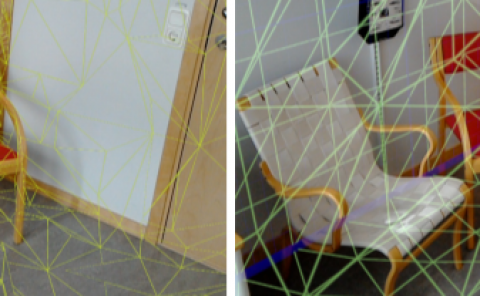Augmented Reality Spine Surgery Navigation
PubDate: January 2022
Teams: Salt Lake Orthopedic Clinic;Georgetown University Hospital;MedStar Union Memorial Hospital Spine Center;University of Washington Medicine;University of Utah School of Medicine;Novarad Corporation; University of California San Diego;Blue Rock Medical Imaging
Writers: Felix, Brent MDa; Kalatar, Seyed Babak MDb; Moatz, Bradley MDc; Hofstetter, Christoph MD, PhDd; Karsy, Michael MD, PhDe; Parr, Ryan PhDf; Gibby, Wendell MD
PDF: Augmented Reality Spine Surgery Navigation

Abstract
Collectively, seven cadavers were instrumented with 124 thoracolumbar pedicle screws using VisAR augmented reality/guidance. Sixty-five screws were inserted into four donors using open dissection spine surgery. Fifty-nine screws were positioned in three donors with a minimally invasive spine surgery (MISS) procedure. For both open and MISS, VisAR was used exclusively for pedicle screw navigation.
Objective.
The objective of this study was to determine the accuracy of pedicle screw placement using VisAR for open spine and MISS procedures.
Summary of Background Data.
Pedicle screw placement can be challenging depending on anatomical location and a surgeon’s experience. AR may minimize fluoroscopy use and speed screw insertion.
Methods.
Prior to computed tomography (CT) a series of four image visible April Tag optical fiducials were attached to the backs’ of the donors. Resulting images were used preoperatively for planned virtual pedicle screw pathways including entry point, trajectory, and depth. The study link was encrypted on a quick response (QR) code, printed, and viewed in the operating room (OR) by the surgeon using VisAR (HoloLens 2 headset). Viewing the code wirelessly uploads and launches the study, converting the DICOM data to holographic images which register to the fiducials on the donor’s back. The annotated pathways for each pedicle were called up by voice command and the surgeon positioned each screw by aligning with the virtual guidance hologram.
Results.
Overall, 124 pedicle screws were inserted with VisAR navigation with 96% accuracy (Gertzbein-Robbins grades A and B). The combined angle of error was 2.4° and the distance error was 1.9 mm.
Conclusion.
Augmented reality is a highly accurate, emerging technology for navigating both open and minimally invasive spine surgery techniques with off-the-shelf headset hardware.



